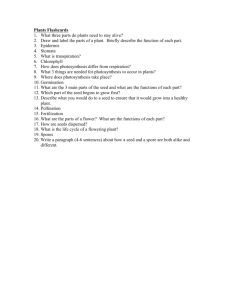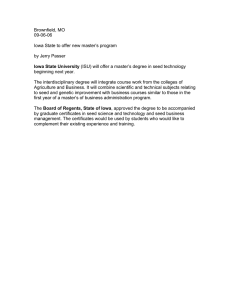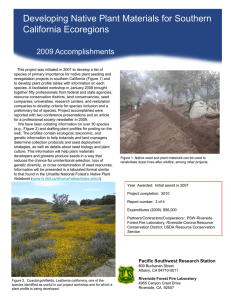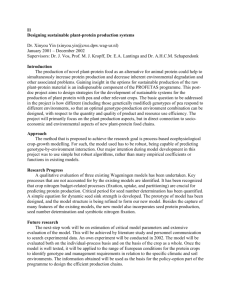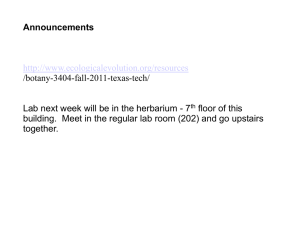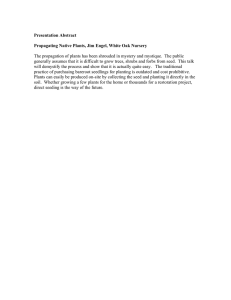NATIVE SPECIES SEED AVAILABILITY (OR NOT) GBNPSIP 13,14Feb08 Stanford Young, UCIA
advertisement
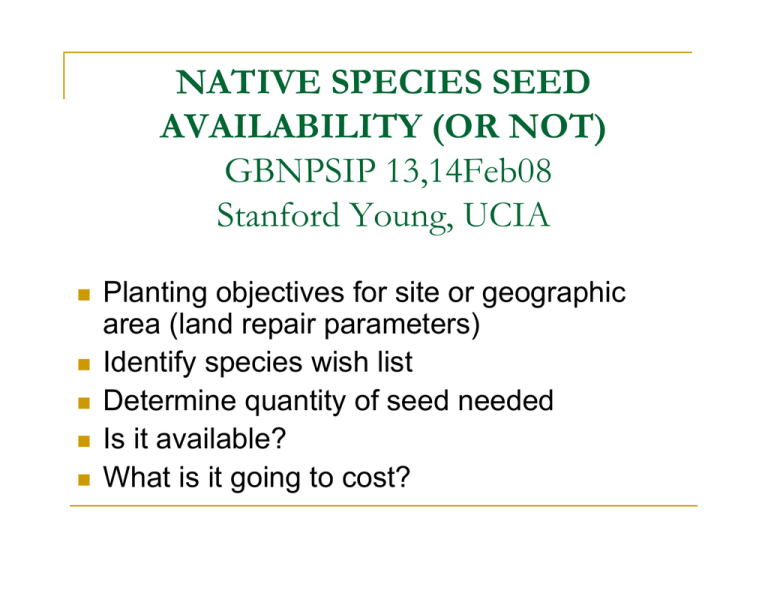
NATIVE SPECIES SEED AVAILABILITY (OR NOT) GBNPSIP 13,14Feb08 Stanford Young, UCIA Planting objectives for site or geographic area (land repair parameters) Identify species wish list Determine quantity of seed needed Is it available? What is it going to cost? Low Re Cost Re •Money Re •Minutes •Manpower Re sto ra ha bil ita ti cla m at ve ge ta tio n ion on tio n High Local Broad Plant Materials •Adaptability •Applicability •Availability ASTA Position Statement on “The Use of Local Native Seed” “The purpose of this Position Statement is to set a framework within which the land manager can make consistent decisions that the seed supplier can predict. Since the seed supplier must plan their crops one or more years in advance, a consistent and predictable use of materials will help insure that the correct species are produced in the quantities needed to service the land repair business.” Working with Seed Industry Tell them what you want, in what quantities, and they will supply it (for a price) Goal: Increase Seed Availability Reduce Price Enlarge geographic area of germplasm applicability (draw provenance map bigger, pool accessions, continue development towards widely adapted varieties, etc.) Expand warehouse capacities and non-emergency seed buys Forward contract at target prices for key species not available in sufficient quantities in the marketplace; this will jump-start wider industry production Fine tune for certain critical species with stock seed buyback, agency on-site increases, master gardener involvement, etc. Plant Materials Evaluation of Availability and Cost The species can be wild collected The species can be wild collected to some extent but may need field production also The species has to be field produced; stock seed for first fields can be wildland collected The species has to be field produced; stock seed for first fields also has to be small plot increased The species cannot logistically (economically) be wild collected or field produced. Forget it. What are the types of “repair” available for disturbed sites in the GB? REVEGETATION RECLAMATION REHABILITATION RESTORATION Can the seed industry accommodate any and all of these choices? ASTA Guidelines: Identify a flexible set of goals and objectives for the land repair project Carefully assess those goals and objectives to insure they are ecologically and economically achievable Select plant materials that are consistent with the goals and objectives of the project Select plant materials whose ecological and economic success to the project can be demonstrated by sound science Select plant materials that are either currently available in the marketplace or can be acquired within a reasonable period of time Change the goals and objectives of the project when they are difficult to attain because of ecological or economic constraints Publish reports of project successes and failures and encourage research institutions to improve the techniques used for land repair
